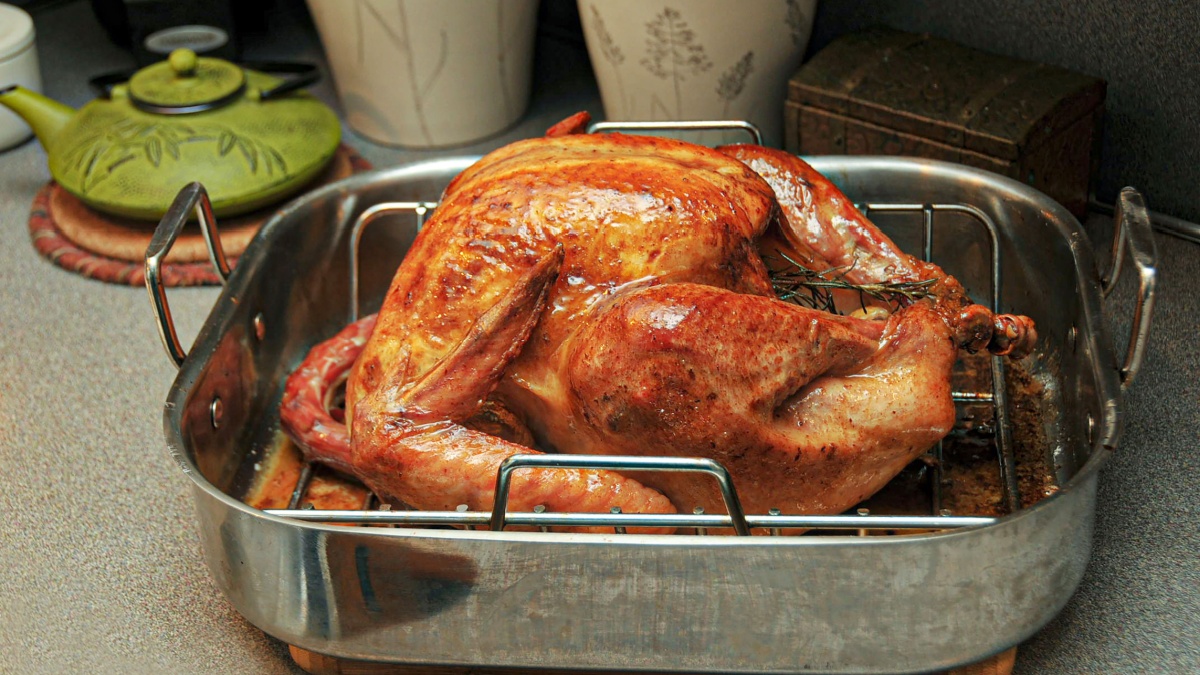Determination of the appropriate cooking regimes for recommendations for the safe roasting/cooking of turkey
.jpg?w=1200&h=675&ext=.jpg&width=670&resizemode=force)
- Project start date: 1 October 2007
- Project status: Completed
- Project type: Food safety
- Discipline: Microbiology and food hygiene
- Author/s: Ms Joy Gaze, Campden & Chorleywood Food Research Association, Gloucestershire
- Collaborator/s: Single supplier
Research objective
This evidence-based study reviewed the standard cooking advice for stuffed and unstuffed turkeys to ensure food safety while maintaining the sensory qualities of the meat.
The study provided appropriate cooking times and temperatures for a range of different sizes of bird in fan assisted ovens and investigated the effect of stuffing on the microbiological safety and sensory acceptability of cooked turkey.
This has allowed safefood policy to be developed in relation to consumer advice where empirical data did not previously exist and expert opinion was used. This has facilitated the organisation in addressing consumer enquiries and producing consumer communications in the Christmas campaigns.
Research report
- Title: Cooking the Christmas Turkey
- Date: 2 November 2009
- Summary: Calculation of safe cooking times for stuffed and unstuffed turkeys
- Findings:
Looking for Safefood's Turkey cooking calculator?
The calculator determines the optimal cooking time for a juicy and safe-to-eat turkey. It is based on the research described below.
Cooking trials
A number of stuffed and unstuffed turkeys were roasted in fan-assisted ovens. The temperature rises during the cooking process were measured in a number of points in the birds to identify when the cooking temperature reached the point that would kill any dangerous bacteria present. These time-temperature data gave the cooking times required to assure safe cooking and enabled mathematical equations to be derived giving cooking time instructions according to turkey weight. These equations only apply to turkeys cooked in fan-assisted electric ovens.
This research showed that the thickest parts of the breast and thigh meat were the slowest parts of the turkey to cook. In cavity stuffed turkeys the centre of the stuffing was the slowest point to cook.
Sensory trials
Expert sensory panels were used to identify the length of time for which cavity stuffed turkeys should be roasted in order to get the best taste. Cavity stuffed turkeys cooked according to the cooking time instructions developed from the cooking trials gave sensory evaluation scores of 6 and 7. These scores indicate that the cooking instructions produced fairly good to good quality turkey meat according to its appearance, flavour and texture. The equivalent sensory scores for unstuffed turkeys were between 6 and 8 indicating similar quality turkey meat to the cavity stuffed birds.
Microbiological challenge tests
Microbiological challenge tests were undertaken to provide an extra check that the cooking instructions produced cooked turkey that was microbiologically safe. This was preformed by adding a cocktail of five strains of Salmonella and Campylobacter to test turkeys. After cooking, using the cooking times developed in the cooking trials studies, no surviving microorganisms were recovered from any of the birds, either stuffed or unstuffed. This proved that the cooking instructions produced microbiologically safe turkey.
Overall the cooking instructions developed from the project produced microbiologically safe turkeys of fairly good to good sensory quality. The results from this project provide cooking advice for fan-assisted ovens based on sound science and is the basis for recommendations which will help ensure that every turkey (large or small), is cooked sufficiently.
- Recommendations:
1. Make sure that the turkey is thoroughly defrosted in the fridge before cooking. If it is not defrosted it will not cook properly and safely. Once thoroughly defrosted, a previously frozen turkey cooks in the same way as a fresh turkey.
2. Consider cooking the stuffing outside the bird, as this will produce a tastier turkey. Stuffed turkeys can take a lot longer to cook than unstuffed turkeys. For example, a large (7.5kg) turkey with cavity stuffing takes 30% longer (almost 1½ hours longer) to be properly and safely cooked, than a similar size unstuffed bird. Such longer cooking times can impair the quality of the turkey meat.
3. If you are stuffing the turkey, use no more than 10% of the weight of the unstuffed bird. If you add too much stuffing, you will need to cook the turkey for longer, and this will affect the quality of the meat. The weight of the stuffing should be no greater than 10% of the weight of the unstuffed bird.
4. Calculate the cooking time based on the weight of your stuffed bird. Make sure to use the combined weight of the total oven-ready bird, including the weight of the added stuffing.




